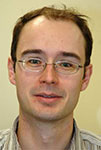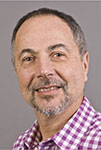CO2 storage capacity estimation for a deep saline formation by static reservoir modelling: the Cretaceous Paaratte Formation, offshore Otway Basin, Victoria
Angie Qu A , Mark Bunch A and John Kaldi ACO2CRC, Australian School of Petroleum, The University of Adelaide
The APPEA Journal 55(1) 283-290 https://doi.org/10.1071/AJ14022
Published: 2015
Abstract
This study used stochastic simulation to estimate the CO2 storage capacity of the Cretaceous Paaratte Formation within the Casino 3D seismic survey area of the offshore Otway Basin, Victoria. Besides interpretation results from primary hard data (well data), relative acoustic impedance was used as secondary soft (proxy) data to model the distribution of the volume fraction of shale (V-Shale). The V-Shale model provided an equivalent model of lithofacies for the clastic reservoir. V-Shale correlated well with the net-to-gross and effective porosity parameters in well log interpretation results. Collocated co-kriging was then used to model the distributions of net-to-gross and effective porosity from well profiles by stochastic co-simulation processes. Using the total pore volume (TPV) obtained from this 3D modelling and storage efficiency factors defined by US DOE-NETL (2012), the potential CO2 storage capacity of the Paaratte reservoir is estimated to be between 11.94 million tonnes (P90) and 128.75 million tonnes (P10) within the geographic footprint of the Casino 3D seismic survey area. The expected TPV storage capacity (P50 confidence interval) is 46.82 million tonnes.

Angie Qu is a PhD candidate at the Australian School of Petroleum, University of Adelaide. Angie received her BEng in petroleum geology from China University of Petroleum, MEng in petroleum engineering from the University of New South Wales, and a Graduate Diploma in computer science from Victoria University. Angie has more than 12 years’ industry experience with Sinopec and PetroChina. Angie’s past research career as a petroleum geologist/geomodeller involved formation evaluation, reservoir characterisation and modelling. Angie is now doing research on the integration of stratigraphic forward modelling with geostatistical stochastic simulation for the purpose of estimating CO2 storage potential in deep saline formations. |

Mark Bunch is a Senior Lecturer in petroleum geoscience at the Australian School of Petroleum, University of Adelaide. Previously, Mark worked for almost seven years with the CO2CRC on geological carbon storage site selection, capacity estimation and geological modelling projects in the onshore Canterbury Basin, NZ, the Gippsland and Otway basins of Victoria, the Surat Basin of Queensland, and the Darling Basin of NSW. He spent a year as Acting Head of Geomodelling for the Otway Basin Pilot Project and led CO2-CRC storage research project 1.3. Mark holds degrees in geology and geophysics, and hydrogeology, and a PhD in stratigraphic forward modelling. Prior to joining the CO2CRC , Mark worked briefly for the North Sea Palaeolandscapes Project at the University of Birmingham in the UK. He has also worked as a research assistant developing shallow groundwater flow models to guide excavation planning. |

John Kaldi is the chief scientist for CO2CRC and professor and chair of geosequestration at the Australian School of Petroleum, University of Adelaide. John's expertise is in CO2 storage (containment, injectivity, capacity), seal evaluation, petroleum reservoir geology, carbonate sedimentology and diagenesis. John has worked in academia for 12 years at the University of Adelaide and in the petroleum industry for more than 18 years with Shell, Arco and Vico, serving in both technical and managerial roles. He obtained his bachelors degree and studied for his masters at Queens College, City University of New York, and he received a PhD from Cambridge University for a dissertation on Permian carbonates (hydrocarbon reservoir rocks) in the North Sea. He became Director of the National Centre for Petroleum Geology and Geophysics at University of Adelaide, Australia (1998-2003) and then was the inaugural Head of School of the Australian School of Petroleum, also at the University of Adelaide (2003-2005). |


